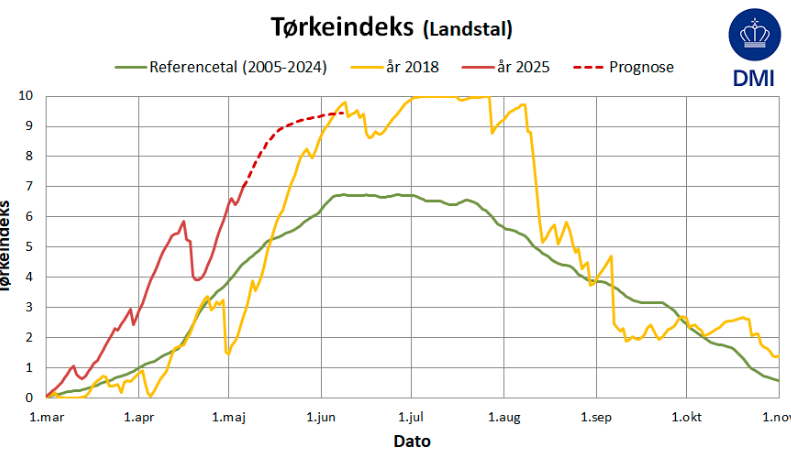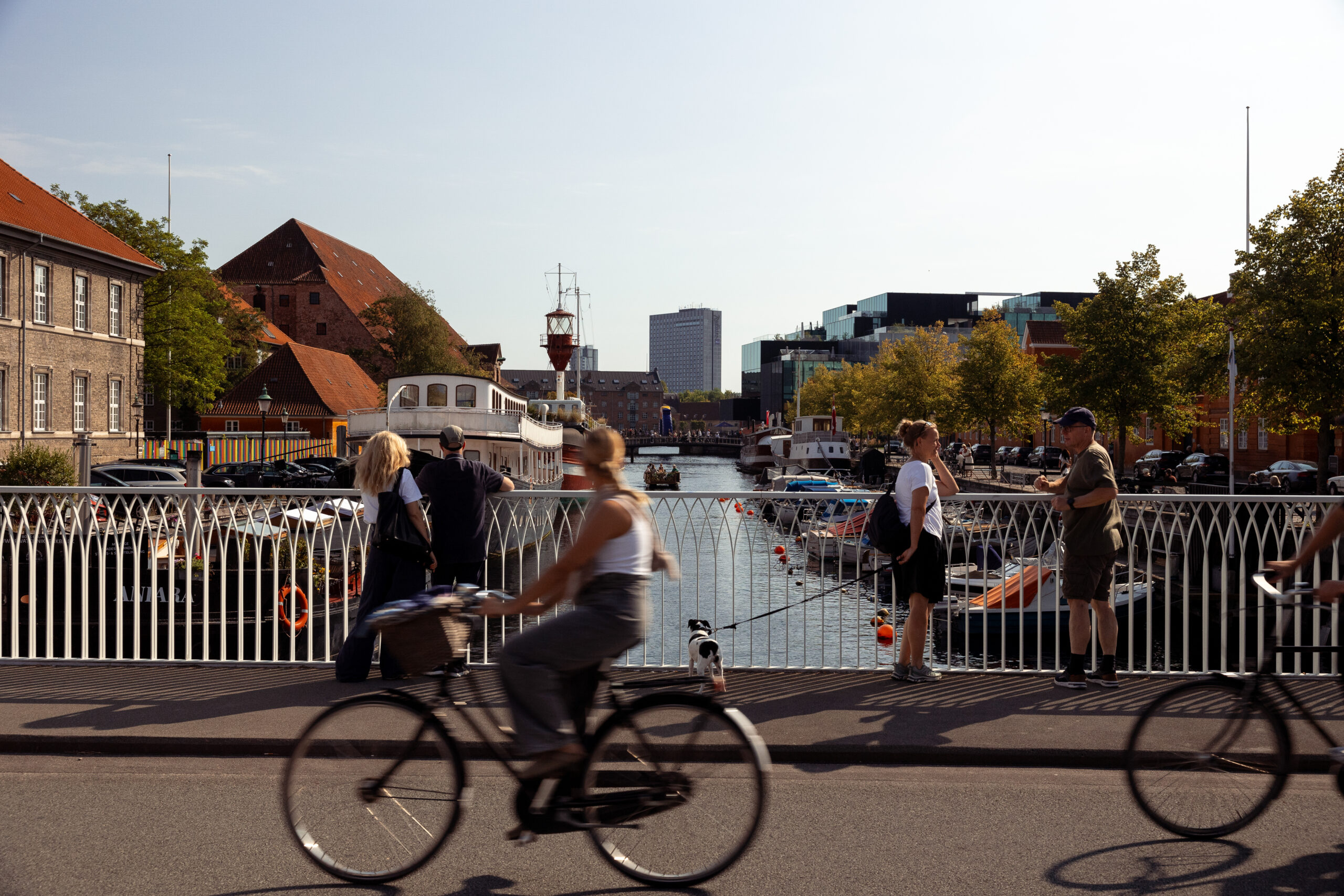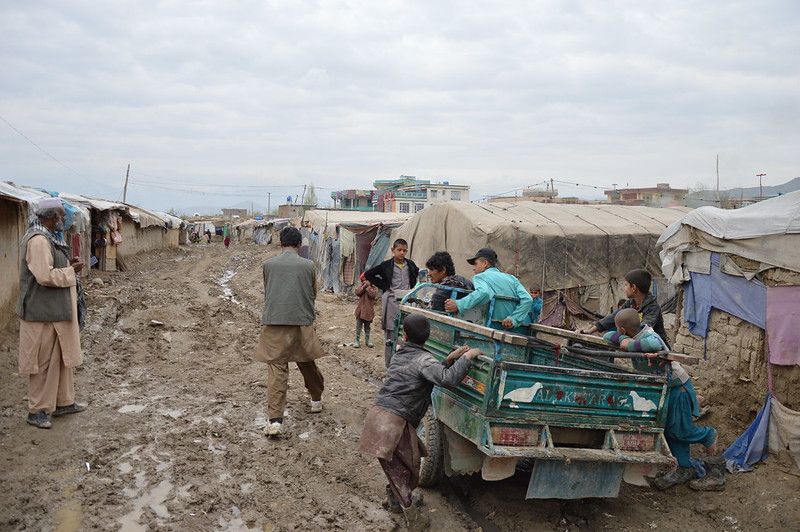It astounds many new arrivals to learn that Denmark, the 130th largest country in the world (with Greenland onboard, it gallops into 12th place), has the 17th longest coastline.
At 7,314 km long, it’s longer than the coastlines of infinitely longer countries such as Chile, Argentina, Thailand and Spain, for example.
And there’s no doubt that its 406 islands play a large role in this.
They come in all shapes and sizes: from massive Zealand, which includes the capital and 40 percent of the country’s population, to the other 300-plus that are inhabited, they are all surrounded by water and unspoilt beaches.
Dreaming of driftwood
With so much coastline at their disposal, most rustic-living Danes are used to having their own private beach to walk along for eight or nine months of the year.
But come the summer, the hordes arrive – from the cities and Germany mostly – although their number is never too many to overcrowd the shorelines and leave a lasting impression.
Most Danish beaches outside the cities – yes, they have them too – are just as God intended. Picture driftwood, freshly-arrived seashells and nature generally doing its thing.
And the very nature of islands means they tend to have more of them! Here are eight of the best handpicked for our CPH POST readers.
Samsø
Located in the Kattegat, 15 km off the Jutland Peninsula, Samsø (population 3,724) is one of the most beloved destinations for Danish holiday-goers. Its tranquil atmosphere can be found in every one of its 22 settlements, which all have their own distinctive character and charm. If you don’t know where to start, here’s a fool-proof plan: take a bottle of wine from Carlos Corner and the island’s best burgers (from Madsnedkeri in Tranebjerg) to Nordby Bakker, a nature area, or Sælvig Strand, a child-friendly beach with shallow water. And then work it off with a visit to the Brattingsborg Gods castle, its nearby woods and, heading due south, the quaintest lighthouse you’re ever likely to see. For a good local pub, check out Ræven, a værtshuse where all walks of life come to drink.
Bornholm
For a sense of really getting away from Denmark yet staying in it, you can’t beat the sunshine isle of Bornholm (population 39,662). Although finding a place in July will be hard given its popularity, this could be the perfect August destination for island-hoppers seeking slightly more than good beaches and quaint villages. Bornholm has it all: new Nordic cuisine, compelling history and outstanding nature. Located closer to Sweden, Germany and Poland than Denmark, it has had its fair share of different owners over the years – most recently the Soviets from 1945 to 1946. And today, its more welcome visitors flock to its beaches, ice cream parlours and smokehouses, where you can enjoy all manner of herring, smoked salmon and seafood galore – normally for a reasonable all-you-can-eat price. Top tip: time-travel to the 13th century ruins of Scandinavia’s largest medieval fortification at Hammershus Castle and take a dip or zip-line across Opalsøen, the old quarry in the island’s granite heyday lined with precipitous cliffs.
Møn
Most people go to Møn (population 9,385) to visit its impressive white chalk cliffs at Møns Klint. But while the views are impressive, and the water just as turquoise as you see it in the pictures, there’s a lot more to enjoy on the island. If you are looking to do some hiking and reconnect with nature, Møn is perfect. Similar to Camino de Santiago in Spain, you’ll find Camønoen, a 175-km hiking trail taking in the three islands of Møn, Bogø and Nyord. The routes are for both experienced and unskilled hikers with magnificent natural landscapes that range from forests and large plantations, to fields populated by Hereford cows and fantastic sandy beaches. Along the trails, you’ll find plenty of benches, toilets and shops to re-energise after your long walk. A good point to start your journey is at Stege, where you’ll find Møn’s main museum. Here you can get a map of the trails and recommendations from the staff. Stege is a beautiful town with charming restaurants and small shops where you can buy local products such as gin or honey. For a long sandy beach, visit Rytsebæk – it’s ideal for sunbathing and swimming. Also visit Klintom Havn for a stroll in the harbour and to sample great seafood and ice cream.
Ærø
Love birds travel to get married on the ‘Wedding Island’ – and for good reason. But even if you are not attending a wedding on Æro (population 6,058), it is well worth a visit for its colourful and quaint houses and its peaceful environment. It looks like something out of a Danish fairy-tale. To get there from Copenhagen, you can either drive or take a train and then the ferry to Ærøskøbing Havn – in total, it takes about 3.5 hours. Once on the island, explore great beaches such as Søby and Vester Strand, which are ideal if you are travelling with children. For the traditional colourful beachside cabins, you have to go to the shores of Eriks Hale, near the town of Marstal, where there is a charming marina. This beach is an isthmus. On one side of the bay, you can enjoy the calm, shallow and warm water, while on the other one you’ll find the refreshing waters of the Baltic Sea. Ærø is certainly best enjoyed by bike. With 150 km of biking trails, the best option to experience the island to the fullest is to rent a bike and explore. To indulge in some local tastes we recommend you stop by Den Gamle Købmandsgaard. They sell local products and serve an unforgettable brunch. Also, try smoked specialties at Ærøskøbing Røgeri and don’t forget to try Ærø’s famous thick pancakes, Løvtens Paa’kar – surely the island’s masterwork!
Rømø
Right in the middle of the Wadden Sea and rich in geology, Rømø (population 584) is a great place for getting lost in sand dunes and letting the wind take you in the most unexpected of directions. Lakolk Beach is one of Europe’s widest sand beaches – the notorious local winds keep pushing the coastal line towards the west. Rent a horse or a pony to wander around the beach, or take a walking tour at Spidsbjerg for magnificent views of the forest and dunes. Havsand Lå, a naturally created swimming pool, is best enjoyed in the summer as its tidal water gets much warmer than the open sea. The 4km-wide Sønderstrand is not a usual beach – three-wheeled and wind-powered vehicles, blokarts and kite-buggies can be rented to ‘sail’ it.
Fanø
The 12-minute ferry journey to Fanø (population 3,495) from Esbjerg introduces you to some of their most exuberant inhabitants: the seals. And really, who better to learn about island life from? Bask in the sun and occasionally bop your head. Located in the centre of the Wadden Sea National Park, the nature options are outstanding. For example, did you know that you can become an official Fanø mountain climber? Certificates are issued to those who conquer ‘The Big Five’ … hang on, they’re not really mountains, are they – more like trails across the dunes. Still, that hasn’t stopped the locals from having a bit of fun. Learn more at geocaching.com! In total, there’s almost a summerhouse for every inhabitant. For those in search of luxury, rent Sønderho Kro, which is one of Denmark’s oldest lodgings, and visit the Fanø Art Musuem in Sønderho, which is undeniably one of Denmark’s quaintest towns.
Læsø
In the southwest corner of Læsø (population 1,786), Denmark’s largest island in the Kattegat, you’ll find one of Denmark’s most special bathing beaches at Stokken. Famed as a great location to go wading out to collect clams and mussels, you are also permitted to bathe freely in the nude. With a gastronomy taken directly from the sea, forest and field, make sure you gobble up some freshly-caught lobsters, chick fish and chanterelles. Kayaking and windsurfing are popular on the island, but remember to take your own surfing equipment as it cannot be rented on the island. Meanwhile, the course at the Læsø Seaside Golf Club course has been named one of Europe’s best by the Peugeot Golf Guide.
Enø
For a spot of culture and history on Enø (population 297), head to Karrebæksminde – an idyllic fishing village situated between a fjord and bay of roughly the same name. Otherwise you’ll have to make do with the endless fun on the water. Enø Vandsport specialises in Stand Up Paddleboard (SUP) and kayaking, and visitors can rent boards, kayaks, kites and life jackets. While its best beach, Enø Strand, is known for its top-notch quality water. With bathing, camping, mini-golf and a healthy number of places to eat – Fiskehuset Enø and Enø Bageri are the top picks – this is an island proud to serve. After all, you’ve probably already noticed that all the businesses tellingly have Enø in their name.














